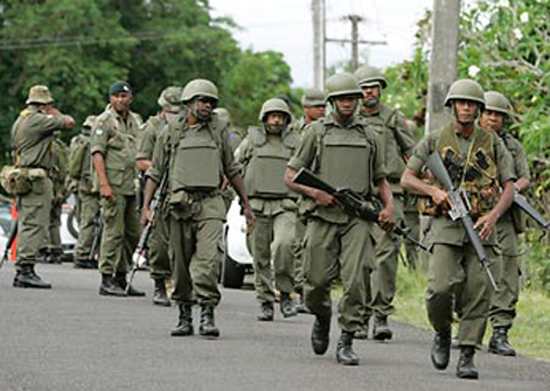ANALYSIS: Australian-made secret plans to invade Fiji, according to a startling report that is bound to heighten suspicion and deepen the already significant rift between the two countries.
The Weekend Australian reports that defence planners prepared a detailed scenario for an invasion as part of an overall strategic review prepared for the Rudd government in 2009.
The newspaper says a top-secret chapter of the government “white paper” outlined how Australia would react militarily if large-scale civil strife erupted in Fiji. It canvassed in detail the use of Australian amphibious ships, the number of troops needed for the invasion, the urgent evacuation of Australians in the country and how the Fiji military might react.
The Fiji invasion was reportedly among a number of scenarios canvassed that also included military intervention in Papua New Guinea.
This detailed how Australia would respond to a “fundamental breakdown of order” in Port Moresby – the capital – and the challenges of getting enough Australian troops to PNG to evacuate Australians and “secure the government”.
It has already been revealed that the same report canvassed several scenarios based on the possibility of hostility erupting between Australia and China. Plans were made to halt mineral shipments to China and use submarines to blockade Chinese ports.
It also canvassed the possibility of a Chinese missile attack on the joint US-Australian communications facility at Pine Gap in the Northern Territory.
Played down
The Weekend Australian quotes “a senior Canberra insider” playing down the significance of the latest disclosures.
“All militaries do this. We have plans for wars with lots of countries, which we’ll never use of course.”
But in the ranks of the Fiji military, the revelations will reinforce existing suspicions that Australia is essentially hostile towards Fiji. Aside from the irksome travel bans on military personnel and their families, there’s already resentment about Australia’s attempt to get Fiji excluded from United Nations peace-keeping operations.
This was thwarted largely by the United States, which argued that Fijian troops were too valuable to UN operations and the Western alliance’s “war on terror” to be included in any sanctions against Fiji for the Bainimarama coup of 2006.
An Australian invasion of Fiji was briefly canvassed after the first coup in 1987, when the then Australian Defence Minister, Kim Beazley, raised it as an option when discussing possible responses to the Rabuka coup against the Bavadra government.
Heavy losses
It was quickly dismissed because of the potential for heavy Australian losses against a Fijian force with a fearsome reputation and real-time fighting experience in some of the world’s worst trouble spots.
The history of the Australian military when it comes to Fiji is not encouraging. A naval show of force before the Bainimarama coup in 2006 ended in humiliation when an Australian Blackhawk helicopter crashed into the sea off the main island – Viti Levu – while attempting to land on the deck of HMAS Kanimbla.
Two Australian servicemen were killed.

This work is licensed under a Creative Commons Attribution-NonCommercial 3.0 New Zealand Licence.




